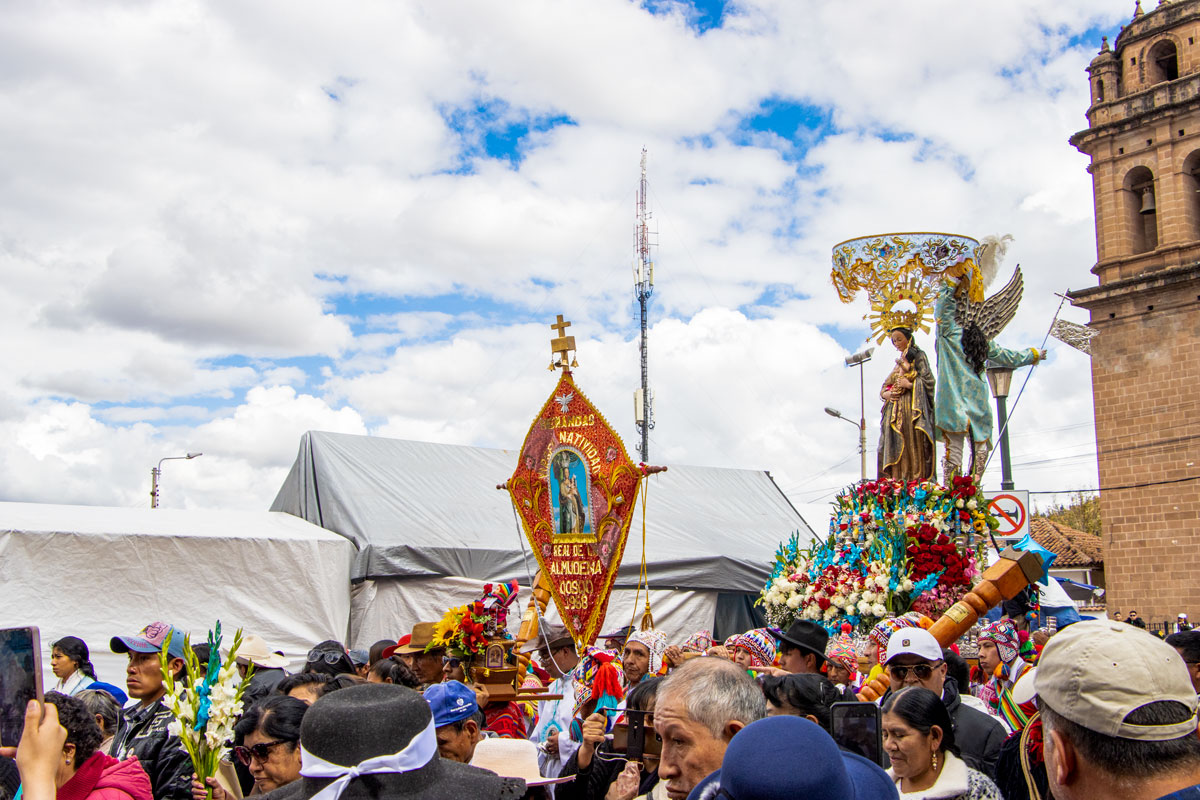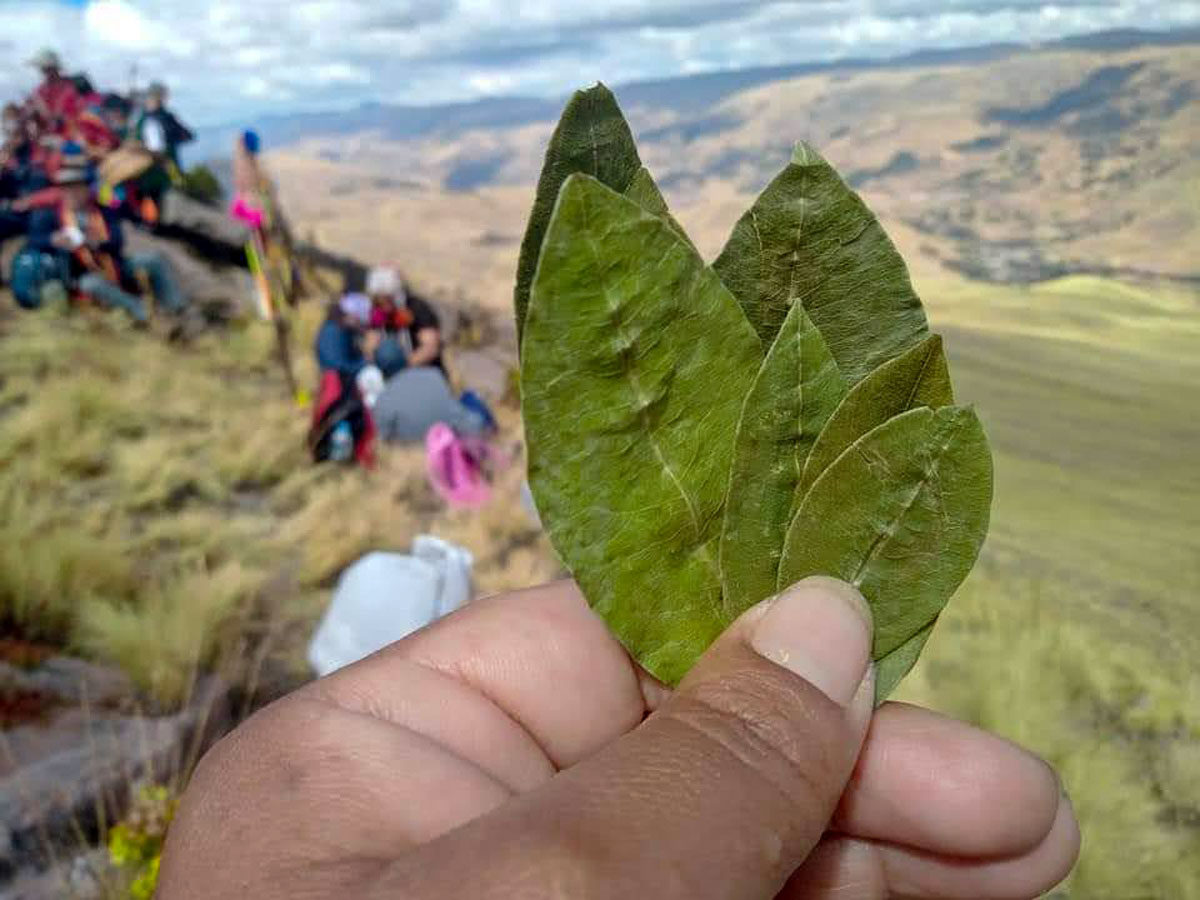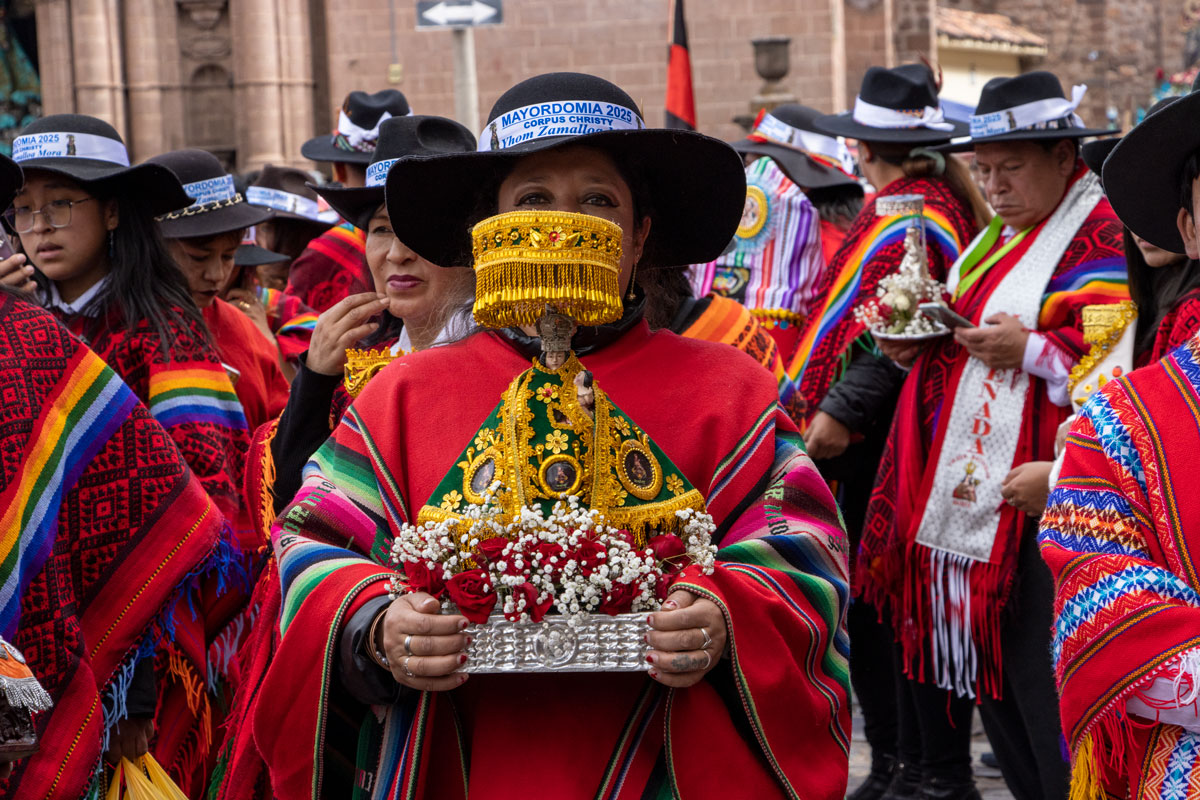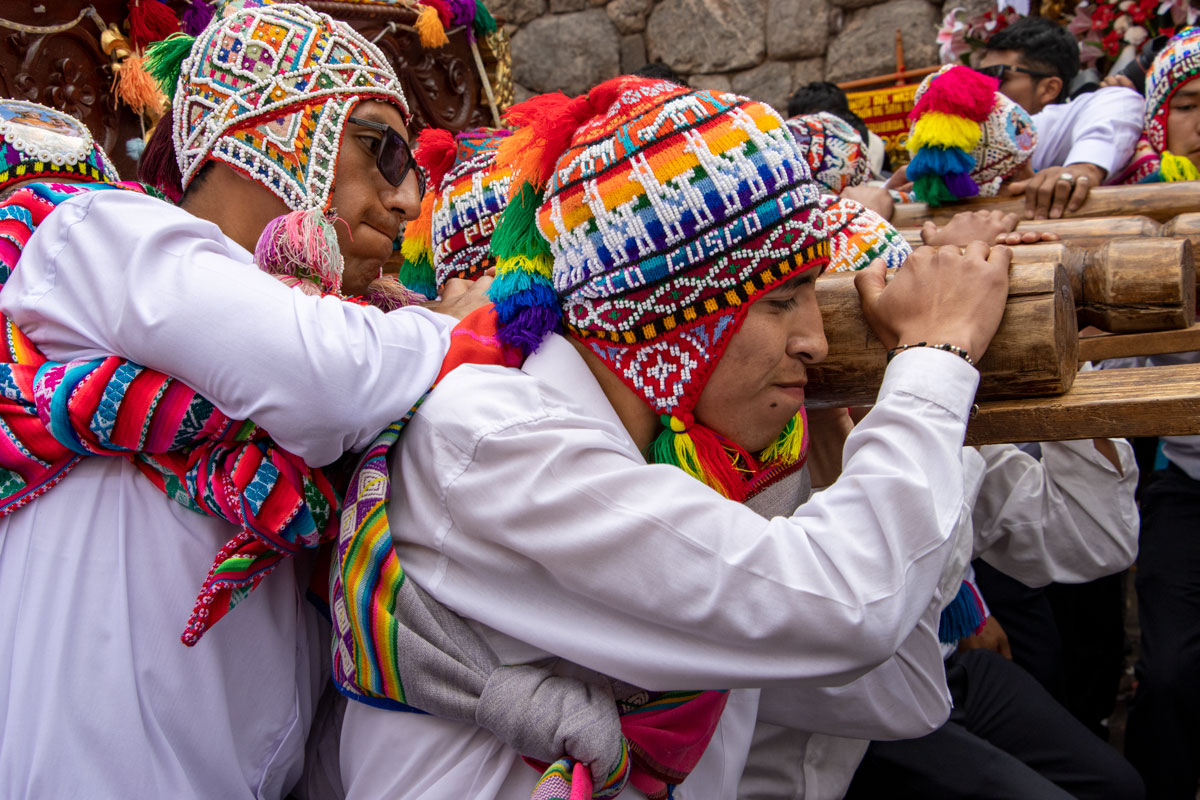

Religion is an essential component of Peruvian culture. 80% of the population declares itself Catholic. The Catholic Church enjoys a certain political power: the Constitution affirms that the State provides its "collaboration", it benefits from tax exemptions, priests are paid largely by the State, almost half of the educational centers are managed by priests or nuns, etc. The images of the Virgin and of Christ are present in all schools, in all police stations, in all hospitals. Although freedom of worship is officially recognized, a Peruvian who has no religion is generally poorly perceived in society.
However, in many parts of Peru, Catholicism is heavily tinged with pagan and pre-Hispanic beliefs and practices: syncretism is an essential feature of Andean religiosity. Thus, the ceremonies and offerings to Pachamama, Mother Earth, are still very much alive; and many processions in honor of the Saints are often departures from the Andean ceremonies that pre-existed before the arrival of the Spanish and the priests. In the countryside, the Apus, the protective spirit of the mountains, Inti, the god of the sun, Killa, the moon, continue to be worshipped, weaving links between the world below, the world in between (ours) and the world below. above.
A recent dynamic that we see developing, particularly in the cities, but also increasingly in the countryside, is the emergence and explosion of Protestant, Evangelical, Jehovah's Witness, Mormon, Adventist movements that are building temples on every corner. Often present in the most disadvantaged neighborhoods where people have lost all cultural references with the rural exodus, it is not uncommon to see crowds that come to kneel, crying and screaming all night.
 |
Peru Religion |
Religion in Peru is a combination of Catholicism and Andean mythology. Although currently between 75 and 81.3% of the population identifies as Catholic, the rituals and ceremonies practiced in Peru have a Spanish and indigenous influence. Many Inca ceremonies are still carried out, such as the Inti Raymi and Qoylloriti.
 |
Andean Religion in Peru: Coca Ceremony |
While many Catholic rituals contain expressions of worship to the Sun God Inti, Pachamama (Mother Earth), and other elements of nature. Religious scholars still debate whether this practice of the Catholic and Andean religion should be studied as a process of fusion or parallel beliefs.
Catholicism was introduced to Peru in the 16th century by the Spanish, but in recent years different churches have gained space in the country, the most prominent being the evangelical church. While evangelical converts are on the rise, the Catholic Church still holds sway over social, cultural, and political views and practices.
 |
Religion of Peru |
Although not officially recognized as the state religion, Catholicism for all practical intents and purposes is the state religion of Peru. While the Constitution declares a freedom of religion, the law requires that all schools, both public and private, teach religious education as part of the curriculum for all grades. In public schools, the only religion included as part of this religious education is Catholicism.
The Constitution in article 50 also recognizes that the Catholic Church has been and is "an important element in the historical, cultural and moral development of the nation." In 1980, an agreement signed with the Vatican conferred this special status on the Catholic Church in Peru. The treaty grants privileged treatment to the Church in matters of education, for immigrant religious workers, tax benefits, and much more.
 |
Religion in Peru |
In addition to the stipends received by the Church, the Catholic clergy also receive remuneration from the state. 52 bishops of Peru benefit from this alliance with the government, as well as some priests located in border cities and towns. Dioceses receive a monthly subsidy from the government. Also government buildings and public places feature Catholic religious symbols. There are very few self-identified atheists and agnostics in Peru.
RELATED STORY: CORPUS CHRISTI PERU
In Peru, 96%, a very high percentage of the population, declares themselves a believer. 93.8% of the country's population practices Christianity, so it is the religion most followed by its population.
In recent years the percentage of believers has decreased, it has gone from 96.9% to 96%. As for Christianity, it has also decreased. In the previous survey, 96% professed it and, according to the latest data, 93.8% of the population professes it.
In the table below we can see that in recent years the second religion, Other religions, has grown while the followers of Christianity have decreased.
If you want to visit Machu Picchu, we recommend you to book your Machu Picchu Tickets in advance, so you will enjoy your Vacation in Machu Picchu without any problem.